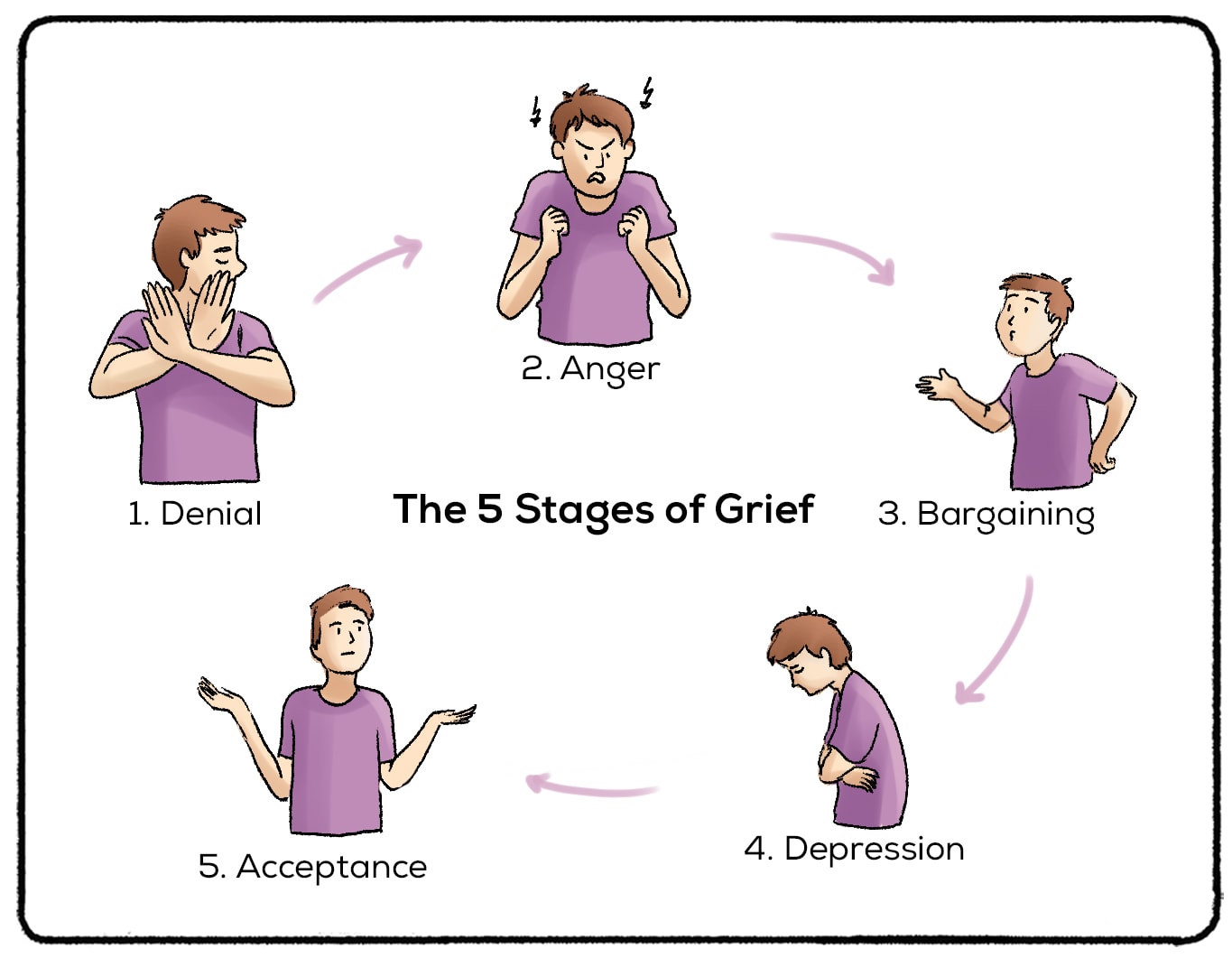5 Stages of Grief Explained

Grief—one of the most emotional terrains that exist. It’s a journey through a multitude of emotions that have been broken down into what is known as the five stages of grief. These stages are each part of the emotional process that people go through after experiencing the loss of a loved one. Each one is complex, yet necessary for ultimately healing. If someone you love has recently died, here are the stages of grief explained that may offer insights into your range of emotions.
Denial
When you first learn about the passing of someone, you often feel total disbelief. It simply doesn’t feel possible that you’re facing a significant loss like the death of a loved one, and as such, it’s incredibly difficult to accept the reality of the situation you’re facing. Denial itself is a defense mechanism that permits your brain to slowly accept its new reality.
Think of it as a temporary shield that protects you from the emotions attached to something intense like that. And while it may be perfectly natural, it’s not sustainable long term. At some point, it’s time to start accepting reality which is usually where the next stage comes in.
Anger
As the denial begins to fade, reality sets in and so does the pain. In most cases, this means a deep surge of emotion, usually starting with anger. They don’t understand why or how this could have happened to them, and the anger sets in. However, this is a crucial part of the grieving process, and this anger should be accepted. It will allow you to express and release all that pent-up emotion whether it’s by screaming or going for a run. The idea is to release it and get it out so you can move on to the next stage.
Bargaining
The third stage, known as bargaining, involves attempting to “bargain” with reality. People often think things like, “If only I would have”, or “What if I had” asking themselves what they could have done differently to stop the situation. This is a natural human instinct as people feel out of control with their circumstances, and they attempt to regain control of reality.
Depression
At this point, when people realize they have no control over the situation, and ultimately there’s nothing they can have or can do, depression sets in. A deep sadness takes over them and usually involves removing themselves from activities and people that once brought them joy. Nothing feels real, and there is a great sense of loss.
Acceptance
Yet, after this dark and intense phase comes the light at the end of the tunnel. The final stage following depression is acceptance. And while this may seem synonymous with moving on, it’s hardly the same. Acceptance simply means coming to terms with what has been lost and accepting it as reality. And while pain may still be present, there is a renewed sense of acceptance and purpose. People are ready to return to their lives despite the emotional challenges they’ve just undergone.

